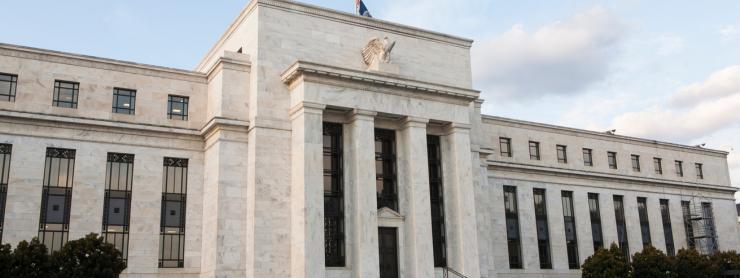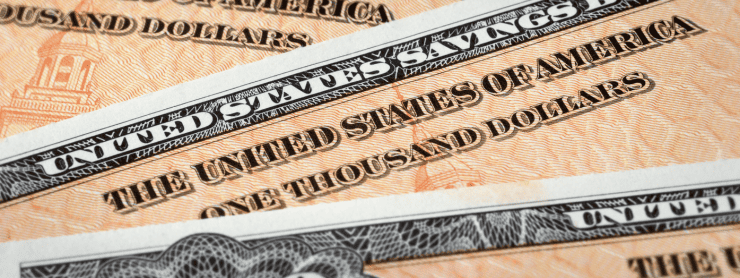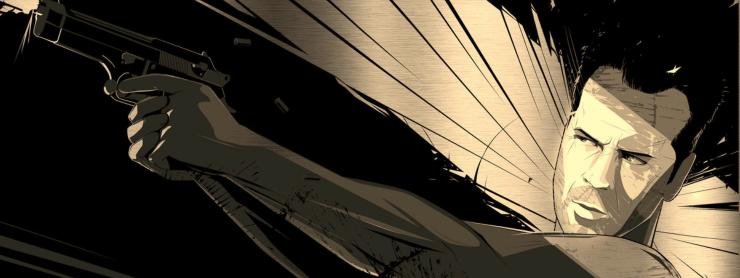Originally post on January 9, 2014 at the New Economic Perspectives blog.
It has been commonplace to speak of central bank independence—as if it were both a reality and a necessity. Discussions of the Fed invariably refer to legislated independence and often to the famous 1951 Accord that apparently settled the matter. [1] While everyone recognizes the Congressionally-imposed dual mandate, the Fed has substantial discretion in its interpretation of the vague call for high employment and low inflation. For a long time economists presumed those goals to be in conflict but in recent years Chairman Greenspan seemed to have successfully argued that pursuit of low inflation rather automatically supports sustainable growth with maximum feasible employment.
In any event, nothing is more sacrosanct than the supposed independence of the central bank from the treasury, with the economics profession as well as policymakers ready to defend the prohibition of central bank “financing” of budget deficits. As in many developed nations, this prohibition was written into US law from the founding of the Fed in 1913. In practice, the prohibition is easy to evade, as we found during WWII in the US when budget deficits ran up to a quarter of GDP. If a central bank stands ready to buy government bonds in the secondary market to peg an interest rate, then private banks will buy bonds in the new issue market and sell them to the central bank at a virtually guaranteed price. Since central bank purchases of bonds supply the reserves needed by banks to buy bonds, a virtuous circle is created so that the treasury faces no financing constraint. That is what the 1951 Accord was supposedly all about—ending the cheap source of US Treasury finance.
Since the Global Financial Crisis hit in 2007 these matters have come to the fore in both the US and the European Monetary Union. In the US, discussion of “printing money” to finance burgeoning deficits was somewhat muted, in part because the Fed purportedly undertook Quantitative Easing to push banks to lend—not to provide the Treasury with cheap funding. But the impact has been the same as WWII-era finances: very low interest rates on government debt even as a large portion of the debt ended up on the books of the Fed, while bank reserves have grown to historic levels (the Fed also purchased and lent against private debt, adding to excess reserves). While hyperinflationists have been pointing to the fact that the Fed is essentially “printing money” (actually reserves) to finance the budget deficits, most other observers have endorsed the Fed’s notion that QE might allow it to “push on a string” by spurring private banks to lend—which is thought to be desirable and certainly better than “financing” budget deficits to allow government spending to grow the economy. Growth through fiscal austerity is the new motto as the Fed accumulates ever more federal government debt and suspect mortgage-backed securities.
The other case is in the EMU where the European Central Bank had long been presumed to be prohibited from buying debt of the member governments. By design, these governments were supposed to be disciplined by markets, to keep their deficits and debt within Maastricht criteria. Needless to say, things have not turned out quite as planned. The ECB’s balance sheet has blown up just as the Fed’s did—and there is no end in sight in Euroland even as the Fed has begun to taper. It would not be hyperbole to predict that the ECB will end up owning (or at least standing behind) most EMU government debt as it continues to expand its backstop.
It is, then, perhaps a good time to reexamine the thinking behind central bank independence. There are several related issues.
First, can a central bank really be independent? In what sense? Political? Operational? Policy formation?
Second, should a central bank be independent? In a democracy should monetary policy—purportedly as important as or even more important than fiscal policy—be unaccountable? Why?
Finally, what are the potential problems faced if a central bank is not independent? Inflation? Insolvency?
While this two part piece will focus on the US and the Fed, the analysis is relevant to general discussions about central bank independence. We will limit our analysis to the questions surrounding what we mean by central bank independence. We leave to other analyses the questions surrounding the wisdom of granting independence to the Fed, democratic accountability, and potential problems. We will argue here that the Fed is independent only in a very narrow sense. We have argued elsewhere that the Fed’s crisis response during the global financial crisis does raise serious issues of transparency and accountability—issues that have not been resolved with the Dodd-Frank legislation.[2] Finally, it will become apparent that we do not believe that lack of central bank independence raises significant problems with inflation or insolvency of the sovereign government.
For the US case we will draw on an excellent study of the evolution of governance of the Fed by Bernard Shull, one of the foremost authorities of the history of the Fed.[3] As we will see, the dominant argument for independence throughout the Fed’s history has been that monetary policy should be set to promote the national interest. This requires that it should be free of political influence coming from Congress. Further, it was gradually accepted that even though the Federal Open Market Committee includes participation by regional Federal Reserve banks, the members of the FOMC are to put the national interest first. Shull shows that while governance issues remain unresolved, Congress has asserted its oversight rights, especially after economic or financial crises.
I’ll also include summaries of the arguments of two insiders—one from the Treasury and the other from the Fed—that also conclude that the case of the Fed’s independence is frequently overstated. The former Treasury official argues that at least within the Treasury there is no presumption that the Fed is operationally independent. The Fed official authored a comprehensive statement on the Fed’s independence, arguing that the Fed is a creature of Congress. More recently, Chairman Bernanke has said that “of course we’ll do whatever Congress tells us to do”: if the Congress is not satisfied with the Fed’s actions, the Congress can always tell the Fed to behave differently.[4]
In the aftermath of the GFC, Congress has attempted to exert greater control with its Dodd-Frank legislation. The Fed handled most of the US policy response to the Great Recession (or, GFC). As we have documented, most of the rescue was behind closed doors and intended to remain secret. (See Felkerson 2012; and Wray 2012)[5] Much of it at least stretched the law and perhaps went beyond the now famous section 13(3) that had been invoked for “unusual and exigent” circumstances for the first time since the Great Depression. Congress has demanded greater transparency and has tightened restrictions on the Fed’s future crisis response. Paradoxically, Dodd-Frank also increased the Fed’s authority and responsibility. However, in some sense this is “deja-vu” because Congressional reaction to the Fed’s poor response to the onset of the Great Depression was similarly paradoxical as Congress simultaneously asserted more control over the Fed while broadening the scope of the Fed’s mission.
INDEPENDENT OF WHAT?
Most references to central bank independence are little more than vague hand-waves. In the US, the Fed is a “creature of Congress”, established by the Federal Reserve Act of 1913, which has been modified a number of times. Elected officials play a role in selecting top Fed officials. And while the Fed is nominally owned by share-holding banks, and while the Fed’s budget is separate, profits above 6% on equity are returned to Treasury. Congress also has asserted its authority to mandate that the Fed release detailed information on its operations and budget—and there seems to be nothing but Congressional timidity to stop it from demanding more control over the Fed (indeed, Dodd-Frank sanctions many of the actions taken by the Fed during the GFC, now requiring prior approval by the President, the Treasury Secretary, and/or Congress for various interventions). Further, as we will see, the Fed’s operations are necessarily closely coordinated with the Treasury’s; the Fed, after all, functions as the Treasury’s bank. Finally, as everyone knows, Congress has provided a dual mandate to guide Fed policy although one could easily interpret Congressional will as consisting of four (at least some of which are related) mandates: high employment, low inflation, acceptable growth, and financial stability.
Above I have argued that the Fed is a creature of Congress. MacLaury has put the relationship this way:
Ultimately the [Federal Reserve] System is accountable to congress, not the executive branch, even though Reserve Board members and the chairman are president-appointed. The authority and delegated policy powers are subject to review by the congress not the president, the Treasury Department, nor by banks or other interests. (p. 4)
While many supporters and critics alike have stressed the Fed’s nominal ownership by member banks as evidence that it is somehow independent of government, the Fed’s Bruce MacLaury interprets the independence as follows[6]:
First, let’s be clear on what independence does not mean. It does not mean decisions and actions made without accountability. By law and by established procedures, the System is clearly accountable to congress—not only for its monetary policy actions, but also for its regulatory responsibilities and for services to banks and to the public. Nor does independence mean that monetary policy actions should be free from public discussion and criticism—by members of congress, by professional economists in and out of government, by financial, business, and community leaders, and by informed citizens. Nor does it mean that the Fed is independent of the government. Although closely interfaced with commercial banking, the Fed is clearly a public institution, functioning within a discipline of responsibility to the “public interest.” It has a degree of independence within the government—which is quite different from being independent of government. Thus, the Federal Reserve System is more appropriately thought of as being “insulated” from, rather than independent of, political—government and banking—special interest pressures. Through their 14-year terms and staggered appointments, for example, members of the Board of Governors are insulated from being dependent on or beholden to the current administration or party in power. In this and in other ways, then, the monetary process is insulated—but not isolated—from these influences. In a functional sense, the insulated structure enables monetary policy makers to look beyond short-term pressures and political expedients whenever the long-term goals of sustainable growth and stable prices may require “unpopular” policy actions. Monetary judgments must be able to weigh as objectively as possible the merit of short-term expedients against long-term consequences—in the on-going public interest.
We can take that as our starting point: the Fed is part of government–a public institution–but is insulated from day-to-day politics and other types of special interest pressures. Let’s explore this independence in more detail, beginning with an historical perspective.
Fed Governance: Historical Perspective
Shull[7] (2014) offers a detailed history of the evolution of Fed governance. He notes that the Fed is an independent government agency like the Federal Trade Commission, the National Labor Relations Board, and the Securities and Exchange Commission. Each of these has substantial discretion in implementing laws through rules and regulations and in formulating policies. Most independent agencies have an Inspector General and are subject to Congressional oversight. The Fed is somewhat unusual in that it is self-financing and in that there is a widely held belief that if its formulation of monetary policy were not independent, the policy outcome would be worse. In other words, good monetary policy supposedly depends on independence (from Congress and the Administration).Thus, the Fed’s monetary policy is not subject to audit by the General Accountability Office—and courts have refused to hear suits that accuse the Fed of policy mistakes. In recent decades, the Administration has been reluctant even to criticize the Fed’s monetary policy. However, as we will see, that has not always been the case.
The movement to create a central bank strengthened after the Panic of 1907. Rival plans were put forward, which ranged from a bank-supported plan which would create a privately-owned central bank (like the Bank of England), to a proposal to house the US central bank within the Treasury. The Glass-Owen bill split the difference, with private ownership and a decentralized system, but with the Treasury Secretary and the Comptroller of the Currency sitting on the Board. The decentralized system was supposed to ensure “fair representation of the financial, industrial and commercial interests and geographic divisions of the country,” (quoted in Shull p. 4). The Board was to be “a distinctly nonpartisan organization and was to be wholly divorced from politics.” (ibid p. 5) According to Paul Warburg, governance was to be maintained by a “system of checks and counter-checks— a paralyzing system which gives powers with one hand and takes them away with the other.” (ibid) In other words, the idea was that by ensuring broad representation of interests, the Fed would be stymied by a “clash of interests” that would reduce the damage it might do; as Shull puts it, “The checks and balances thus constituted a form of internal governance.” (ibid p. 5) That of course sounds somewhat familiar as a typically American approach to governance.
When WWI came along, however, the Fed turned its attention to supporting the Treasury’s debt issue. In the inflationary period at the end of the war, the regional Feds raised discount rates sharply (up to 85%) and a deep retraction followed that led to deflation of farm prices. Congress revisited the governance issue as some critics wanted to force the Fed to seek Congressional approval in advance of future rate hikes. One of the Board members, Adolph Miller, understood the implication:
“The American people will never stand contraction if they know it can be helped. Least of all will they stand contraction if they think it is contraction at the instance, or with the consent of an institution like the Federal Reserve System….The Reserve System cannot ‘make’ the business situation but it can do an immense deal to make its extremes less pronounced and violent….Discount policy…should always address itself to the phase of the business cycle through which the country happens to be passing.” (quoted in Shull, p. 7)
As Shull argues, the governance by paralyzing checks and balances conflicted with the need to cooperate to use monetary policy to stabilize the economy. Congress tightened the reins on the Fed but also centralized decision-making at the Board in Washington. The GAO began to audit the Board and there were a number of Commissions and Committees that investigated new guidelines to control the Fed. However, the 1927 Pepper-McFadden Act replaced the Fed’s original 20 year charter with an indefinite charter, and a Congressional report at the time declared that the Fed had demonstrated its usefulness. In the end, Congressional anger dissipated and not much was done to constrain the Fed’s discretion.
Governance issues again came to the forefront during the Great Depression, with serious consideration given to government ownership of the Fed, to be housed in the Treasury. President Roosevelt (who seemed to have supported such a move) as well as many in Congress were concerned that the Fed was not sufficiently attune to the national interest. Title II of the Banking Act of 1935 was a compromise that preserved private ownership but moved to ensure the Board would be more responsive, focusing on the national interest. (Shull, p. 10) As power was further centralized in Washington, the “checks-and-balances” approach to governance continued to fade.
As in WWI, WWII saw the Fed cooperating with Treasury, in the national interest to keep rates on national debt low. That ended in the famous Accord of 1951, restoring “independence” of the Fed to formulate monetary policy. However, policy was still to be undertaken in the national interest, with the Fed keeping rates very low until the mid 1960s; the Fed mainly operated in short-term Treasury bills so as to have minimum effects on other financial markets. Monetary policy remained on the backburner until the inflation-recession cycle of the early 1970s. In 1975, Congress decided to exert greater control, in House Resolution 113.
In the Federal Reserve Reform Act of 1977, the Senate insisted on the requirement that it confirm the President’s appointment of the Fed’s chairman and vice-chairman. In addition Congress required that Class B Reserve bank directors had to be “elected to represent the public”. (Shull p. 12) The 1978 Humphrey-Hawkins full Employment and Balanced Growth Act clarified the Fed’s mandates and required semi-annual reports to both the Senate and the House. Later, after Chairman Greenspan got caught in “white lies” provided to Chairman Gonzalez, the Fed was required to release its transcripts of FOMC meetings (albeit with a five year lag).[8] The Fed also voluntarily agreed to measures designed to increase transparency (including announcing its explicit interest rate target).
The final big changes to governance occurred after the GFC, when Dodd-Frank tightened limits on what the Fed can do in response to a crisis. This was a surprising turn of events, as Chairman Greenspan had become the darling of Congress and the media and his replacement, Chairman Bernanke, had declared the era of the New Moderation in which central bankers could do nothing wrong. However, in the aftermath of the crisis, many elected representatives as well as the media and the population at large blamed the Fed for the crisis and for bungling a response that made the downturn worse than it should have been. As we’ve argued elsewhere, even many of those directly involved agreed that the Fed’s crisis response “stunk” and that it should never be repeated.[9] The Dodd-Frank legislation was designed in part to ensure it would not happen again.
However, yet again, Congress actually extended Fed responsibility, to include authority over large, systemically important non-bank financial institutions. Still, the Act restricted application of Section 13(3) in future crises, and for some actions required approval from the Treasury. It also mandated increased transparency (including a review by the GAO of all the Fed’s emergency assistance after the GFC). Congress also created the Financial Stability Oversight Council that is chaired by the Treasury Secretary and includes heads of agencies involved in overlooking the financial sector—including the Fed. In that manner it diluted the Fed’s power somewhat. Exactly what difference all this will make for the response in the next crisis cannot be foreseen in advance.
Next time, in Part 2, we look at the Fed’s supposed independence from our elected representatives. We’ll see that that is a fabricated myth.
[1] Thorvald Moe examines the role of Marriner Eccles and the discussions and events that led up to the 1951 Accord. Eccles was a dominant figure in the transformation of the Fed from the relatively weak and decentralized institution that had been created in 1913 to the modern central bank we know now. Moe makes a strong case that the vision of Eccles was instrumental in that evolution; as we will see, modern theories of central banks, however, deviate sharply from the Eccles vision in quite illuminating ways. See: Thorvald Grung Moe “Marriner S. Eccles and the 1951 Treasury – Federal Reserve Accord: Lessons for Central Bank Independence” Working Paper No. 747, Levy Economics Institute of Bard College January 2013.
[2] See two annual reports of research conducted with the support of Ford Foundation Grant no. 1110-‐0184, administered by the University of Missouri–Kansas City. See: L. Randall Wray, 2012. “Improving Governance of the Government Safety Net in Financial Crises,” Research Project Report, April 9. http://www.levyinstitute.org/pubs/rpr_04_12_wray.pdf; and L. Randall Wray, 2013. “The Lender of Last Resort: A Critical Analysis of the Federal Reserve’s Unprecedented Intervention after 2007”, Research Project Report, April http://www.levyinstitute.org/publications/?docid=1739.
[3] Bernard Shull, who made a great presentation at the annual ASSA meetings in Philadelphia. His paper, “Financial crisis resolution and Federal Reserve governance: economic thought and political realities”, Jan 4 2014, is forthcoming as Levy Institute Working Paper.
[4] See his statement here: http://www.youtube.com/watch?v=a7XV3vS1hAM.
[5] See James A. Felkerson, 2012 “A Detailed Look at the Fed’s Crisis Response by Funding Facility and Recipient.” Public Policy Brief No. 123. Annandale-on-Hudson, NY: Levy Economics Institute of Bard College. http://www.levyinstitute.org/pubs/ppb_123.pdf; and L. Randall Wray, 2012. “Improving Governance of the Government Safety Net in Financial Crises,” Research Project Report, April 9. http://www.levyinstitute.org/pubs/rpr_04_12_wray.pdf.
[6] See Bruce K. MacLaury; “Perspectives on Federal Reserve Independence – A Changing Structure for Changing Times”; Published January 1, 1977, The Federal Reserve Bank of Minneapolis, Annual Report 1976, http://www.minneapolisfed.org/publications_papers/pub_display.cfm?id=690, which examines Fed independence with respect to Congress, the Executive branch (including the Treasury), member banks, and within itself (ie, for example relations between the Board of Governors in Washington and the District banks). I will use several quotes from this comprehensive survey.
[7] Bernard Shull, “Financial crisis resolution and Federal Reserve governance: economic thought and political realities”, Jan 4 2014, forthcoming as Levy Institute Working Paper.
[8] See L. Randall Wray, “The Fed and the New Monetary Consensus: The Case for Rate Hikes, Part Two”, Public Policy Brief No. 80, December 2004, p. 14 for a discussion of this episode.
[9] See Wray 2013, the second report of this Ford Foundation-funded project, cited above.
10 RESPONSES TO “THE GREATEST MYTH PROPAGATED ABOUT THE FED: CENTRAL BANK INDEPENDENCE (PART 1)”
- Neil Wilson | January 10, 2014 at 1:17 am |“privately-owned central bank (like the Bank of England)”Probably worth pointing out (for the avoidance of nutters) that although the Bank of England was indeed private in 1907, it is no longer private, having been nationalised in 1946.The Bank is a public sector institution, wholly-owned by the government, but accountable to Parliament. The entire capital of the Bank is, in fact, held by the Treasury solicitor on behalf of HM Treasury.
- LRWray | January 10, 2014 at 6:58 am |Neil: thanks much. Yes, important to add that, or we’ll get people thinking the BofE is “independent”.By the way, the funniest thing I’ve ever read on the Internet is an exchange over the supposed independence of the Fed. By coincidence, it occurred last night. Someone named GeeRussell has got to be the quickest, cleverist commentor on the internet:
http://www.reddit.com/r/Economics/comments/1ursa6/the_biggest_myths_in_economics/
- reserveporto | January 10, 2014 at 12:24 pm |Wow. That reddit thread becomes an astoundingly long bout of trash talking.
- DAB | January 10, 2014 at 2:11 pm |What an odd exchange. Cullen could have simply said at the beginning, “yeah that’s what I meant.”
- Neil Wilson | January 10, 2014 at 11:17 pm |(!)I’m surprised there is anybody who has the stamina to get to the last word first.
- reserveporto | January 10, 2014 at 12:24 pm |Wow. That reddit thread becomes an astoundingly long bout of trash talking.
- Philippe | January 10, 2014 at 7:05 am |Randall,“And while the Fed is nominally owned by share-holding banks”The Fed is comprised of a central government agency and 12 regional reserve banks. Only the regional reserve banks are “nominally owned by share-holding banks”.
- Philippe | January 10, 2014 at 7:14 am |How the Fed describes itself:“Who owns the Federal Reserve?The Federal Reserve System fulfills its public mission as an independent entity within government. It is not “owned” by anyone and is not a private, profit-making institution.As the nation’s central bank, the Federal Reserve derives its authority from the Congress of the United States. It is considered an independent central bank because its monetary policy decisions do not have to be approved by the President or anyone else in the executive or legislative branches of government, it does not receive funding appropriated by the Congress, and the terms of the members of the Board of Governors span multiple presidential and congressional terms.However, the Federal Reserve is subject to oversight by the Congress, which often reviews the Federal Reserve’s activities and can alter its responsibilities by statute. Therefore, the Federal Reserve can be more accurately described as “independent within the government” rather than “independent of government.”The 12 regional Federal Reserve Banks, which were established by the Congress as the operating arms of the nation’s central banking system, are organized similarly to private corporations–possibly leading to some confusion about “ownership.” For example, the Reserve Banks issue shares of stock to member banks. However, owning Reserve Bank stock is quite different from owning stock in a private company. The Reserve Banks are not operated for profit, and ownership of a certain amount of stock is, by law, a condition of membership in the System. The stock may not be sold, traded, or pledged as security for a loan; dividends are, by law, 6 percent per year.”http://www.federalreserve.gov/faqs/about_14986.htm“What does it mean that the Federal Reserve is “independent within the government”?The Federal Reserve, like many other central banks, is an independent government agency but also one that is ultimately accountable to the public and the Congress. The Congress established maximum employment and stable prices as the key macroeconomic objectives for the Federal Reserve in its conduct of monetary policy. The Congress also structured the Federal Reserve to ensure that its monetary policy decisions focus on achieving these long-run goals and do not become subject to political pressures that could lead to undesirable outcomes. So, members of the Board of Governors are appointed for staggered 14-year terms and the Chairman of the Board is appointed for a four-year term. Elected officials and members of the Administration are not allowed to serve on the Board.The Federal Reserve does not receive funding through the congressional budgetary process. The Fed’s income comes primarily from the interest on government securities that it has acquired through open market operations. Other sources of income are the interest on foreign currency investments held by the Federal Reserve System; fees received for services provided to depository institutions, such as check clearing, funds transfers, and automated clearinghouse operations; and interest on loans to depository institutions. After paying its expenses, the Federal Reserve turns the rest of its earnings over to the U.S. Treasury.”http://www.federalreserve.gov/faqs/about_12799.htm





